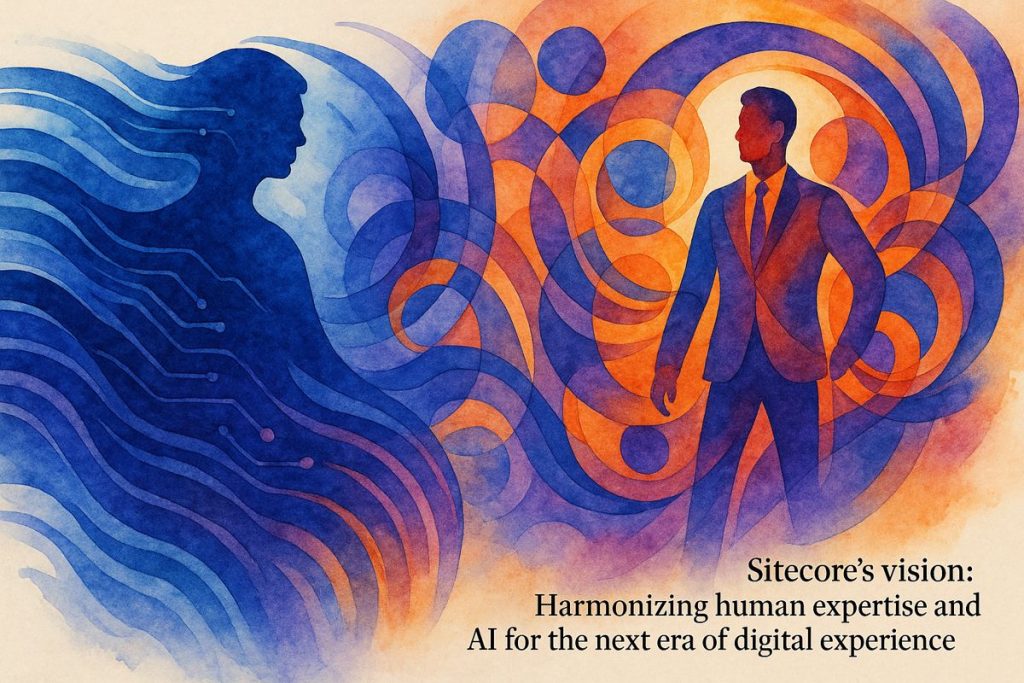Sitecore switched CEOs in 2025 to move faster with innovation and stay strong in the digital experience market. Eric Stine, known for his success with AI-powered software and growing businesses, replaced Dave O’Flanagan. The change brought fresh energy and focus on launching new products, pushing AI, and winning in industries like pharma. Stine’s mission is to keep Sitecore ahead with smart tools that help companies personalize and automate customer experiences. This leadership shakeup made partners a bit nervous but also promised bold moves in a fast-changing tech world.
Why did Sitecore change its CEO in 2025?
Sitecore changed its CEO in 2025 to accelerate innovation and strengthen its position in the competitive digital experience platform (DXP) market. Eric Stine replaced Dave O’Flanagan, bringing operational expertise and a proven track record in driving AI-powered SaaS growth, product launches, and global expansion.
The Unexpected Handoff: O’Flanagan Out, Stine In
Every so often, the tech world gives us a moment that smells like burnt coffee and fresh uncertainty. Sitecore—yes, the same digital experience platform (DXP) titan that’s fueled Equifax’s customer journeys and kept Zurich Insurance’s marketers on their toes—just pulled a classic boardroom switcheroo. In May 2025, barely a year after Dave O’Flanagan took the CEO chair, Eric Stine was handed the keys to the company (and presumably a new security badge). You might ask: why the abrupt baton pass? Was it the pressure of integrating Boxever’s hyperspectral data streams, or did the AI zeitgeist simply demand a new maestro?
Let’s back up. O’Flanagan, once the captain of Boxever before its 2021 Sitecore acquisition, had been steering Sitecore through a swirl of SaaS pivots and AI-infused product overhauls since April 2024. His tenure read like an engineer’s fever dream—cloud-native everything, AI copilots in every corner, existing customers nudged (or gently shoved) toward an XM Cloud future. At least, that’s what the CMSWire coverage seemed to suggest.
I’ll admit, when I first caught wind of O’Flanagan’s departure, I felt a flicker of déjà vu—didn’t we just see a similar plot twist at another software powerhouse last spring? Change, it seems, is the only constant. And sometimes it’s caffeinated.
Eric Stine: Operator, Visionary, or Alchemist?
Now, enter Eric Stine. Not a stranger to the company, but a man often described (a touch theatrically) as the operational backbone behind Sitecore’s recent growth. As COO, he orchestrated XM Cloud’s revenue leap—doubling figures faster than I can spell “composability”—and expanded Sitecore’s AI-enabled SaaS offerings into new geographies. Under his guidance, the product innovation ticker rolled past 250 launches, including the much-hyped Sitecore Stream, which, to quote a colleague, “flows AI like espresso at a developer’s hackathon.” Check the official press release for the formalities.
But here’s the thing: operational acumen is one thing. Vision is another. Is Stine the sort of leader who can weave domain complexity into a clear, competitive narrative—or just keep the trains running on time? I had to stop and ask myself if Sitecore’s board is betting on safe hands, or on a technologist who can electrify the market. Either way, the proof will be in the product roadmap—and perhaps in the occasional whiff of burnt toast from late-night brainstorming.
Strategic Orbits: AI, Personalization, and the Market’s Palimpsest
The DXP sector right now is a palimpsest—old monoliths erased and rewritten in the ink of generative AI and composable architectures. Sitecore is neither immune nor inert. Under Stine, the company is trumpeting a renewed focus on innovation, partner intimacy, and AI-fueled differentiation. According to PRNewswire, there’s talk of deeper channel collaboration and—please don’t roll your eyes—“customer-centricity.”
Here’s where the rubber hits the road: more than 250 product enhancements, a “brand-aware” digital experience paradigm, and a significant push into regulated verticals like pharma and life sciences. I remember a particularly frantic Monday last quarter, when a pharma client’s compliance team called me in a tizzy about AI content traceability. Sitecore’s new agentic workflows—complete with audit trails and sandboxed experimentation—saved the day and, quite possibly, my reputation. Relief doesn’t begin to cover it; it was more like a quiet “bam!”
The AI copilots aren’t just vaporware, either. They’re automating content creation, tuning multichannel delivery, and making marketers feel like they’ve grown a third hand (or, on bad days, a third eyebrow). There’s something oddly tactile about the way these tools “feel”—almost like running your fingers across embossed Braille when you’re used to plain paper.
Market Undercurrents and the Partner Conundrum
Meanwhile, the competitive landscape is humming—more like a low, anxious drone than a symphony. For the first time in half a decade, the DXP leaderboard got a shake-up. (Read the CMSWire analysis if you enjoy a little market intrigue.) Sitecore’s embrace of SaaS-first, API-obsessed delivery has found favor with the likes of INEOS Automotive and Shure, who prize agility and future-proofing over ornamental feature sets.
But there’s a catch. Change at the top can make integration partners—think Customertimes and their ilk—a bit jumpy. Stability isn’t just a bonus; it’s the oxygen for those orchestrating complex, regulated deployments. I’ve made the rookie mistake before of underestimating partner nerves after a big shakeup. Lesson learned: clear roadmaps
